Shadow Play
“Do our shadows look like the monsters in the book?” asks James.
I glance over and see James and Noa connecting their shadows by overlapping their arms. When we engage children in outdoor shadow play to support active exploration and discovery, their creativity is endless!
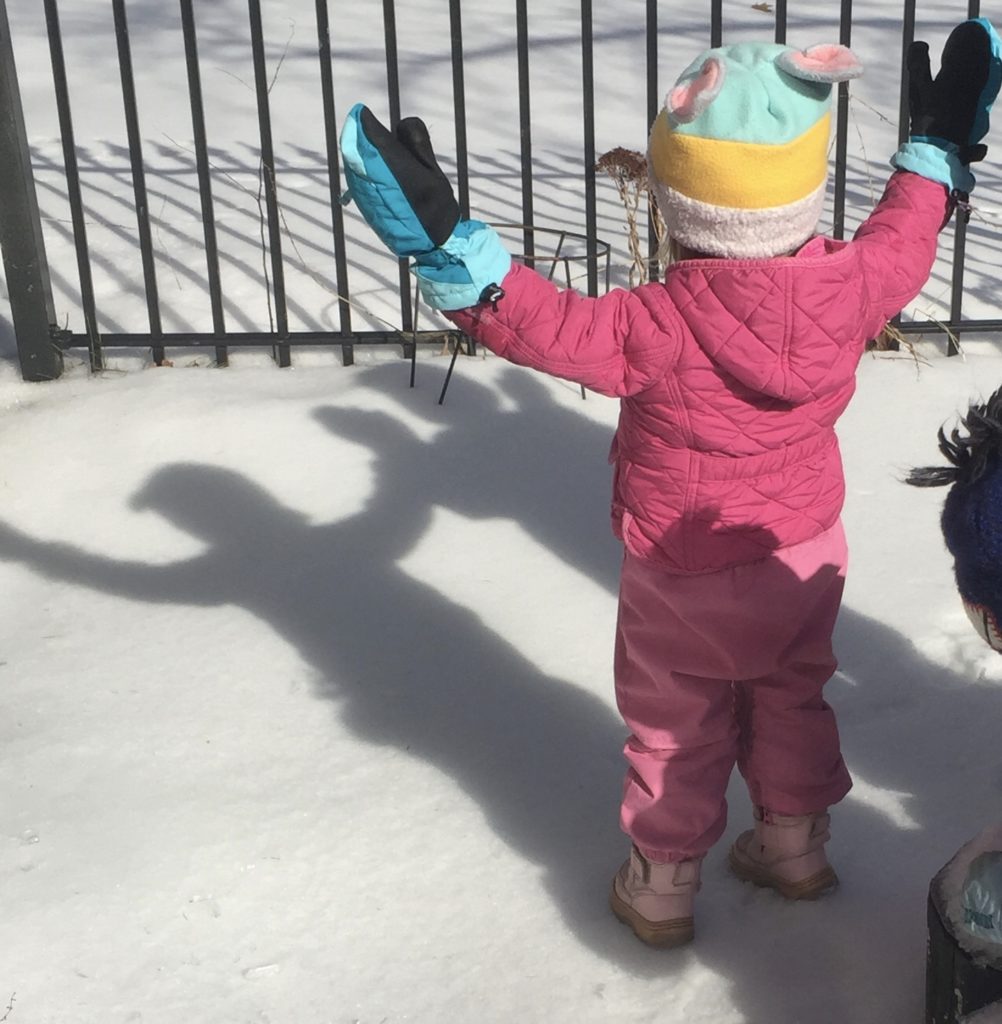
James and Noa are playing out their version of the book, The Dark, Dark Night by M. Christina Butler. This charming children’s tale follows a frog heading home to his pond after a long winter’s sleep. Along the way, he stops to frolic with his friends Badger, Hedgehog, Rabbit and Mouse. As darkness falls, Frog borrows a lantern from his friend, Mouse, to light the way home.
But, as Frog approaches the reeds at the edge of the pond, he finds himself face to face with a HUGE pond monster with enormous claws. Terrified, Frog hightails it back to his friends. Each friend returns to the pond with Frog—only to flee when the monster reappears. But the friends ultimately realize that the fearsome “pond monster” is not a monster at all—just some scary shadows created by light from the lantern.
Our four- and five-year-old students love this tale. But we had to read The Dark, Dark Night many times before the shadow storyline finally sank in for the younger children in the group. It also took a bit of time and investigation for these younger learners to observe that, when we move, our shadows move too!

When we’re outside, we often engage in body-shadow play with the sun as our light source. Exploring the ways that shadows change as we move our bodies is a great way to get kids engaged and excited about learning. Our road is often closed to traffic during the winter months, and we always take the opportunity to grab tape measures to see how long our shadows are.
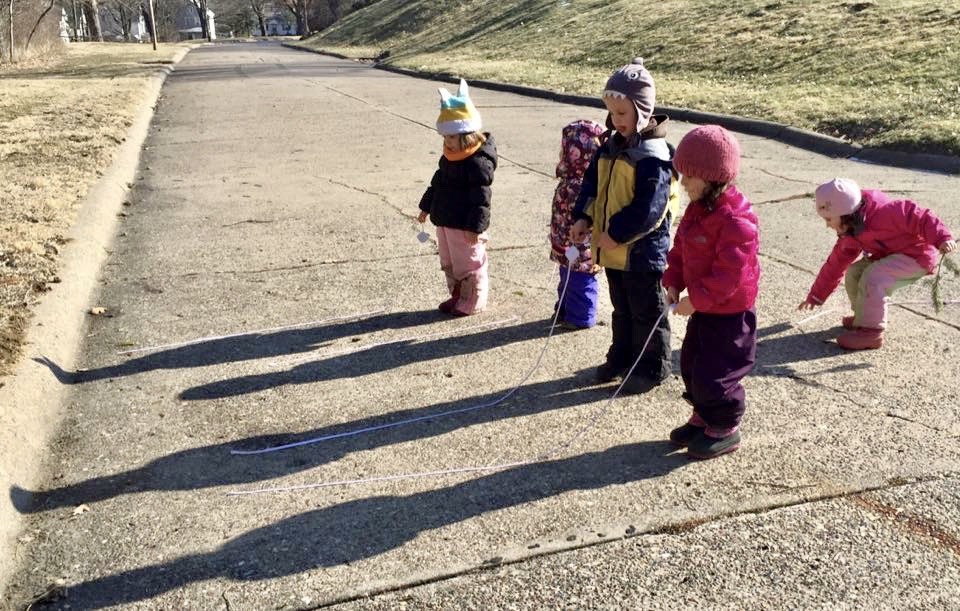
I often challenge our friends to see if they can disconnect from their shadows. After a few minutes of contorting our bodies to see if we can separate from our shadows, we decide that we can’t, but that never stops the fun and silliness of trying!
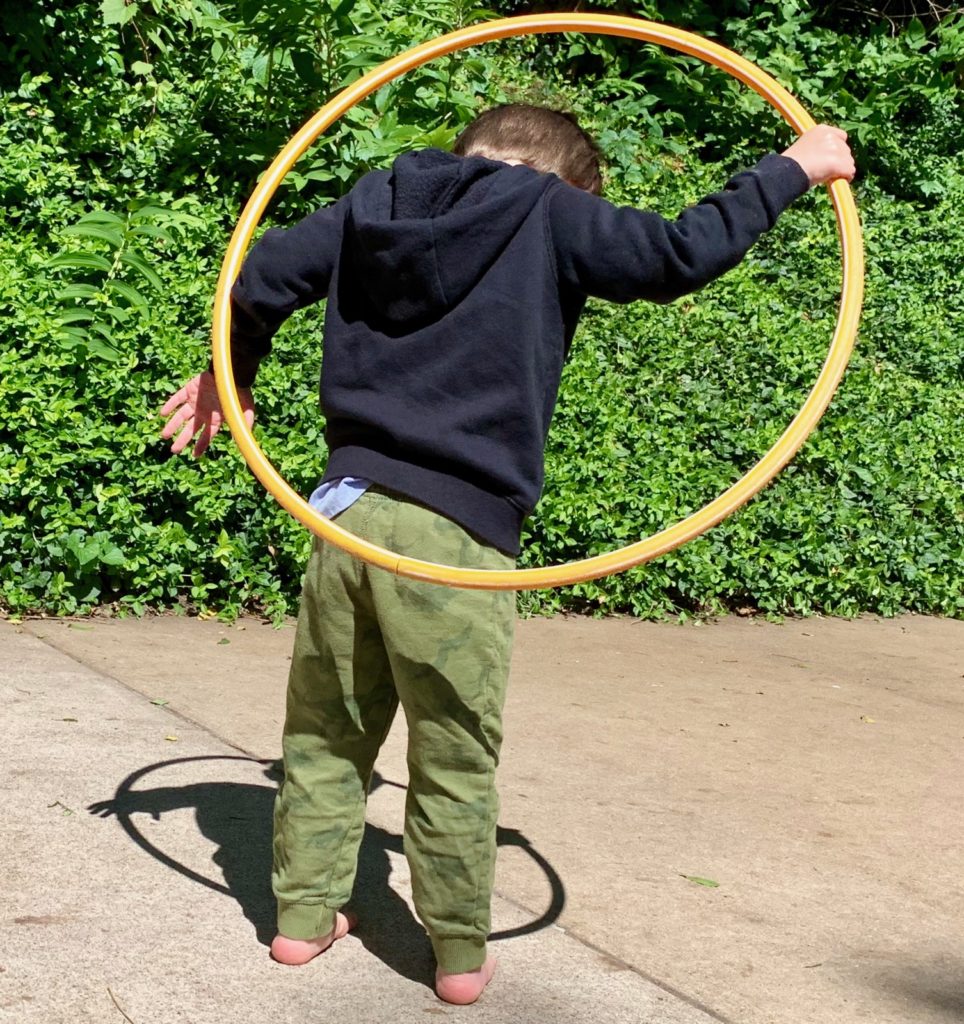
We create math shadow games by calling out different shapes and encouraging the children to do their best to create shadows in these shapes. Movements like standing on one foot, reaching up high to touch the sky and walking on all fours all help children develop body awareness.
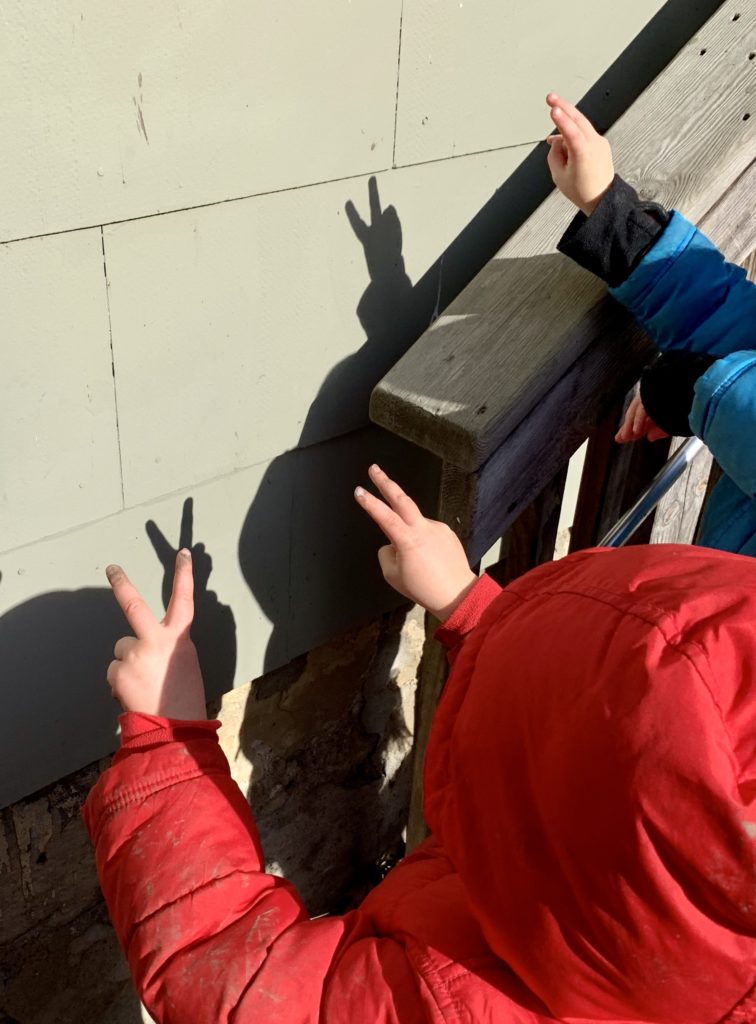
Here’s a great way to practice fine-motor skills during shadow play: Use the sun, a projector light or a flashlight to create shadows of tiny hands on a wall. The children can work on finger isolation (e.g. pointing with the index finger, counting out the fingers on their hands and wiggling all of the fingers individually); thumb opposition (e.g. touching the thumb to each finger); and other hand positions to create different types of shadows, an activity that helps build dexterity while laying the foundation for later STEM learning. We also play “Follow the Shadow Leader” and encourage the children to recreate the leader’s shadow by duplicating his or her movements.
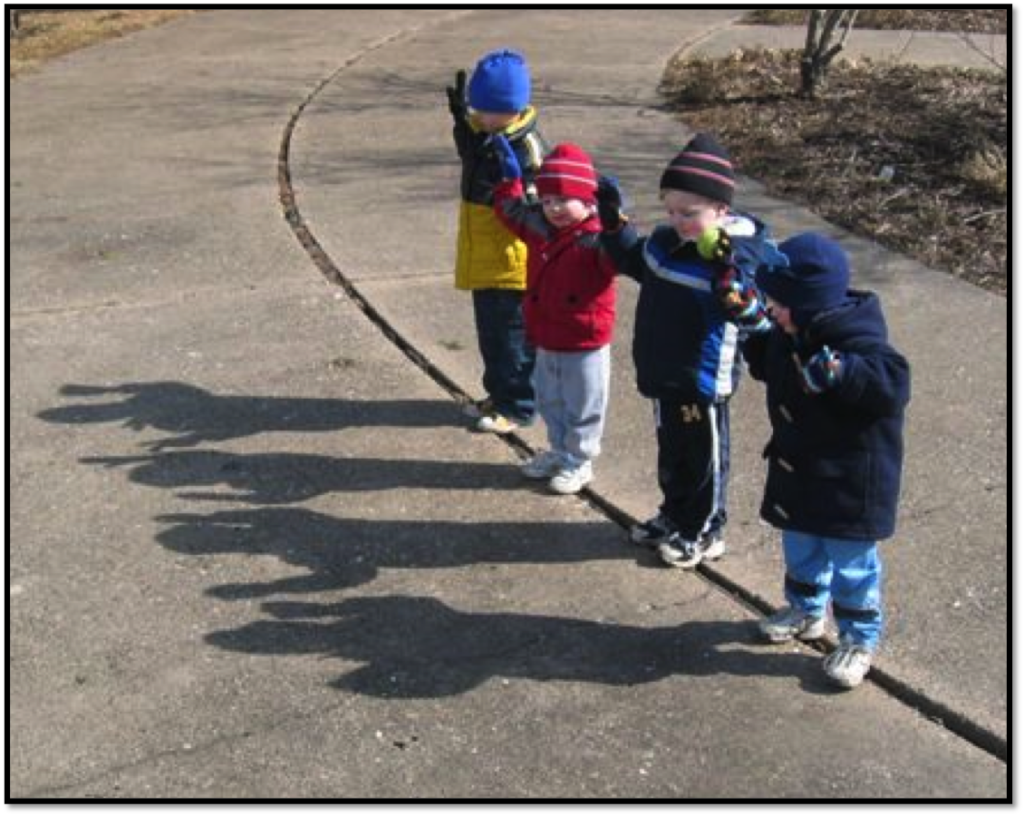
Shadow play also helps children develop a rudimentary understanding of cause and effect as they observe what makes a shadow and where the light needs to be to cast a shadow. By moving their shadows around, they can investigate different shapes and sizes.

“Look how dark my shadow is today! Yesterday, we could not see it very well.” Owen is the first to recognize that sunnier days and brighter lights create darker shadows. Observations like Owen’s are often followed by other STEM activities such as creating hypotheses, developing theories and collecting data as the children continue their investigations and deepen their understanding of the nature of light and shadow.
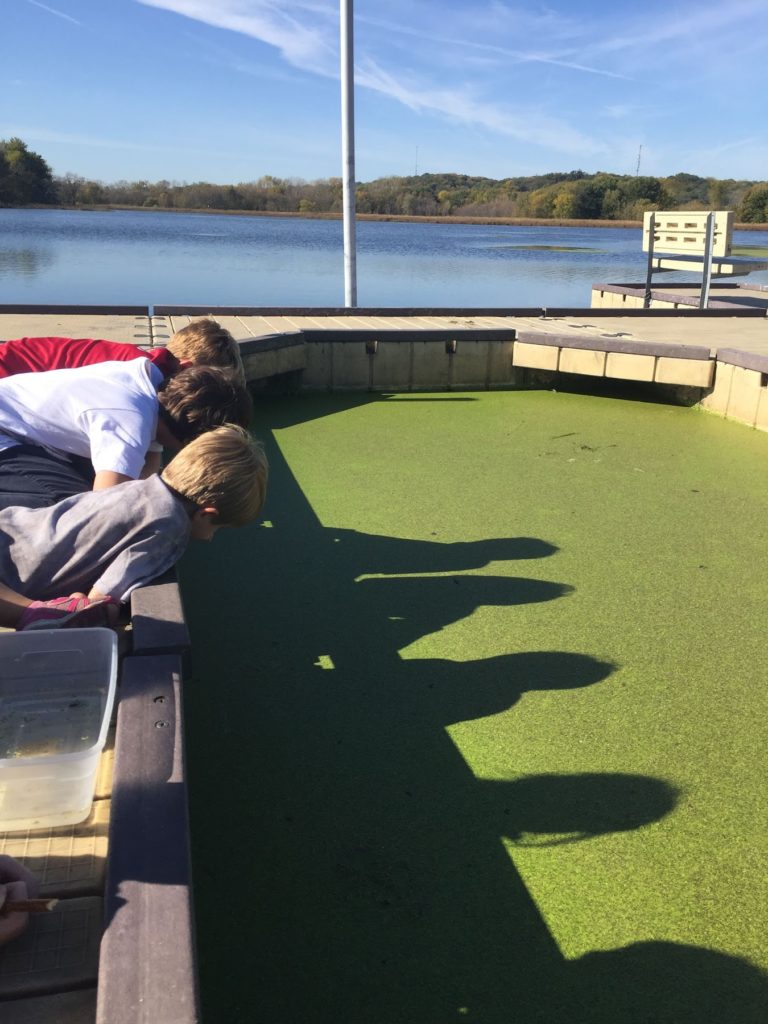
Your students may also notice that their shadows are different sizes at different times of the day. Depending on the amount of sunlight that illuminates our play space, their shadows can be longer, shorter or nonexistent.
You can also show the children how to change the size of a shadow. Move an object closer to a light source and the shadow becomes bigger. Move it away from the light source and the shadow becomes smaller.
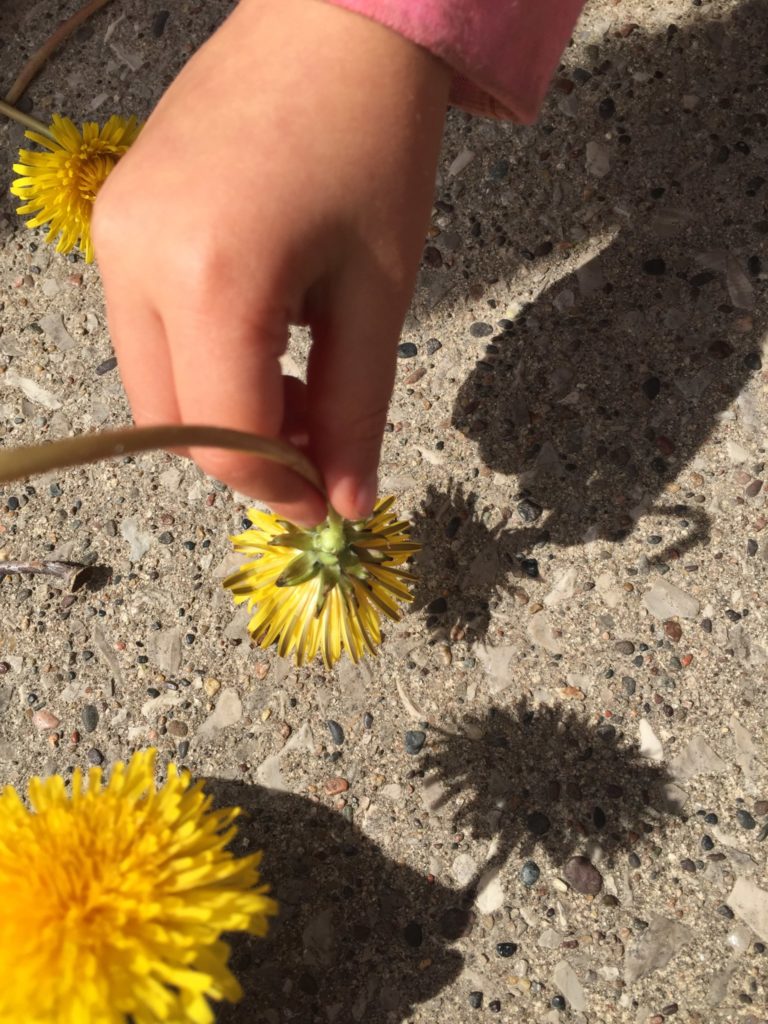
Light and shadow play is an amazing way for children to explore their world. If the sun is shining, why not meet your Illinois Early Learning Standards for math and science while playing with shadows. Have fun!

Sue Kozlowski- I love how children act in regards to their shadow. We’ve always used it for big/ small comparing but this helped me think of other ways to use our shadows . Plus I must admit even though I used it for big small , I never put it in with math. Don’t know why
Something so simple yet filled with so many different levels of learning!
I enjoy letting the kids see their shadows by patterning short, tall, short, tall. Kids love this kind of pattern and really enjoy themselves outdoors.
Oh, Judy! I love this idea! You made me wish for a sunny day even more than I had already been needing one! Rainy week, day three! Thanks for sharing, I can’t wait to try this with my gang!
Kids really do enjoy this and getting them outdoors helps tremendously to redirect their attention. Shadow play is a great way for children to make different patterns and have fun while getting them out of the classroom!
Our kids also love these types of shadow activities as well as they trace each others shadow with chalk
– As we all know, playing outside is one of the best thing for the learning of the children, while the kids is looking or laying of their shadow they develop their critical thinking because they can differentiate the sizes, the shapes of it and also they develop their vocabulary by sharing of their ideas.
I really like this idea, I feel like some kids think its a monster and get scared but later realize its just themselves running around. I love when kids can make shapes with their shadows.
This is a great idea for an activity to do with children outside. It has STEM all over it. Helps developmental skills in the fine and gross motor skills. As well learn about patterns such as tall and small and counting skills as well.
I never would have thought that math and shadows could go together! I love the idea of measuring your shadows, creating patterns (big and small), or even practicing fine motor skills! Cannot wait to try this with my kids!
Children love to see their Shadows. Get it I’ll just such as farm animals and Trace their Shadows.
This is a great way to teach them so many different concepts with such a simple thing.